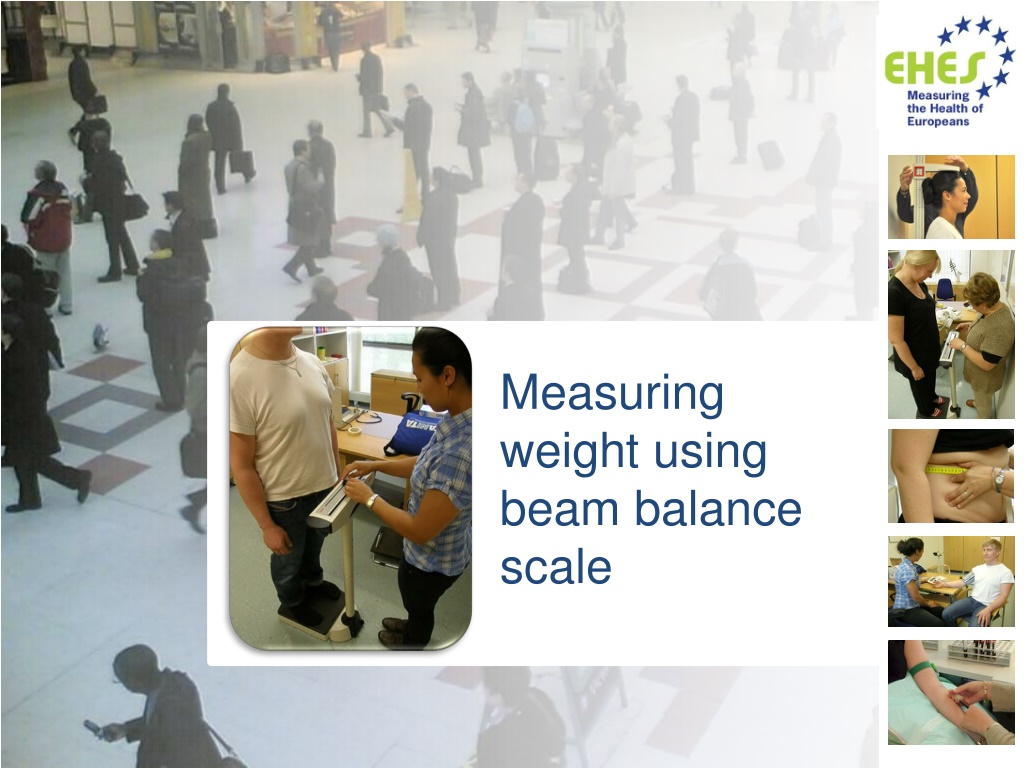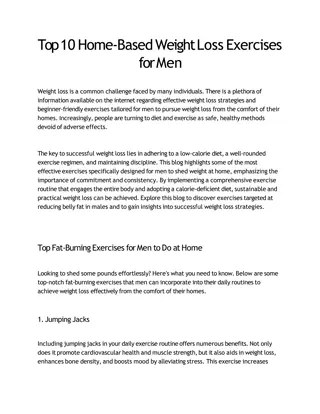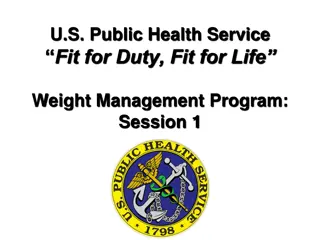Weight Measurement Procedures Using Beam Balance Scale
The process of measuring weight using a beam balance scale involves equipment setup, checking, and calibration to ensure accurate results. Motivating participants about the importance of accurate weight measurements and the exclusion criteria for immobile participants are highlighted. Clothing instructions are provided to standardize the measuring process for consistency in results.
Uploaded on Oct 08, 2024 | 1 Views
Download Presentation

Please find below an Image/Link to download the presentation.
The content on the website is provided AS IS for your information and personal use only. It may not be sold, licensed, or shared on other websites without obtaining consent from the author.If you encounter any issues during the download, it is possible that the publisher has removed the file from their server.
You are allowed to download the files provided on this website for personal or commercial use, subject to the condition that they are used lawfully. All files are the property of their respective owners.
The content on the website is provided AS IS for your information and personal use only. It may not be sold, licensed, or shared on other websites without obtaining consent from the author.
E N D
Presentation Transcript
Measuring weight using beam balance scale
Based on EHES Manual, Part B. Fieldwork Procedures, 2ndedition (2016) Available at: http://urn.fi/URN:ISBN:978-952-302-701-5 These slides can be used freely, translated and adapted to national use (e.g. concerning the equipment). However, it is important to keep in mind that no changes should be made to the measurement techniques, which need to be standardized.
Equipment Beam balance scale Calibration weights Carpenter s level (if the scale has not a built in level)
Checking and calibration Daily or when a new examination site is set up: Place the scale on hard floor Check that the scale is horizontal (by carpenter's level or level in the device)
Checking and calibration Balance with both sliding weights at zero and the balance bar aligned In the beginning and at the end of each examination day Use standard (calibration) weights to check the scale in regular intervals Place 10 kg or 20 kg weights one by one on the scale up to 100 kg and check that the scale works properly If the error is greater than 0.2 kg the scale should be corrected or changed Record the results of checking and calibration in the survey log book
Motivate participant Explain why weight is measured Previous measurements may be inaccurate and not comparable to the results from other participants Your weight is likely to vary even daily Accurate weight is needed e.g. to calculate body mass index, which is an indicator of obesity
Exclusion criteria Weight is not measured if participant is immobile or in a wheelchair and has severe difficulties in standing steady is heavier than the upper limit of the scale refuses
Clothing Ask the participant to undress to his/her underwear or as light clothing as feasible If the participant refuses or feels uncomfortable to undress, ask him/her at least to take off shoes, heavy garments such as jacket, pullover, belts, heavy jewellery, and empty pockets
Posture Ask the participant to stand still in the centre of the platform arms hanging loosely at his/her sides weight distributed evenly on both feet
Before measurement Check that both sliding weights are at zero
Weight measurement Move the weights until the beam balances properly
Recording Record weight to the resolution of the scale Record extra clothing, if more than underwear If the participant is pregnant, ask and record pregnancy weeks and the weight before pregnancy separately from the measured weight If weight is not measured, record the reason Record the number of the measurement device used
Acknowledgements Slides prepared by: Johanna M ki-Opas, Annamari Lundqvist, Hanna Tolonen, P ivikki Koponen Photographs: Hanna Tolonen Measurement demonstrations by Shadia Rask, Liisa Saarikoski, Ulla Leskinen and voluntary participants Experiences and feedback from the EHES network have been utilized in the preparation of these slides Funding: Preparation of the slides is part of the activities of the EHES Coordinating Centre which has received funding from the EC/DG SANT in 2009-2012 through SANCO/2008/C2/02-SI2.538318 EHES and Grand Agreement number 2009-23-01, and in 2015-2017 through Grand Agreement number 664691/BRIDGE Health
Disclaimer The views expressed here are those of the authors and they do not represent the Commission s official position.

 undefined
undefined

































